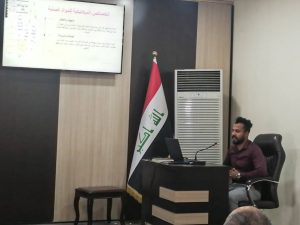A master’s dissertation in the College of Science at the University of Kerbala has discussed the preparation and characterization of iron oxide nanoparticles and their use in removing some water pollutants by a student Hussein Mahawish Muhammad, including three chapters, which are the introduction, the practical part, the results and discussion, the preparation of iron nanoparticles with and without the use of a surfactant and its application in removing dye Eocene yellow as a water pollutant.
The aim of the thesis was to prepare the nanostructure of magnetic iron oxide (Fe3O4) as a catalyst and to study the effect of using positive, negative and neutral surfactants on the preparation methods, as well as to study the properties of the prepared nanostructure using deduced spectroscopy (FTIR), X-ray diffraction (XRD), and Scanning electron microscopy (SEM). As well as the extraction of eosin yellow dye was studied in a liquid-solid system to investigate the various variables of the dye removal process such as the effect of the catalyst (iron oxide), equilibrium time, masses, initial pH, temperature, and studying of isobaric models, kinetics and thermodynamics.
The thesis has recommended the preparation of iron oxide nanoparticles using environmentally friendly methods, being less expensive and non-toxic, bonding the nanoparticles with other surfactants, and characterizing the prepared surfaces using other techniques such as atomic force microscopy (AFM), thermogravimetric analysis (TGA), and surface area. BET, and Raman spectroscopy, to determine the surface area, active sites on the surface, and the thickness of the nano-layer, as well as to study the effect of other factors on the adsorption process, such as ionic strength, the concentration of surfactants, and vibration velocity, to study the biological activity of the prepared materials, and to study the mechanical and electrical properties of the finished materials.






























































